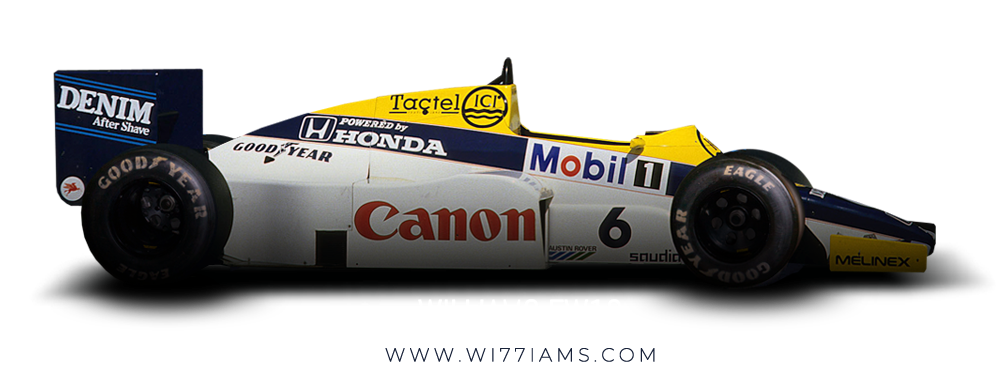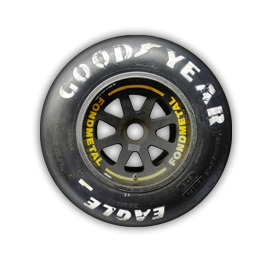After a difficult 1984 where the Williams FW09 struggled to cope with the sheer brute force of the Honda turbo, the FW10, designed by Frank Dernie, and made from carbon composite, in-house at Williams’ new factory in Didcot, Oxfordshire was primarily focussed on improving handling, and better accommodating the Honda.
Keke Rosberg was retained from 1984, and he was partnered with Englishman Nigel Mansell.
The cars were off the pace when the car was introduced at the beginning of the 1985 season, but the introduction of a new Honda turbo engine in Detroit signalled a significant increase in performance.
Frequently beset with reliability issues, and was notoriously difficult to drive in wet conditions, the FW10 was known as being a good all-rounder, in that it was competitive at most circuits over the course of the season.
Williams FW10B
Mid-season the season a ‘B’ version of the car was introduced which featured pull-rod rear suspension replacing the push-rod suspension on the FW10.
This allowed the team finish strongly, securing third place in the World Constructors Championship, thanks to wins by Rosberg in Detroit and Adelaide (his last in Formula 1), and Nigel Mansell taking his first wins in Formula 1 at Brands Hatch in that year’s European Grand Prix and the South African Grand Prix at Kylami.
Thanks to a partnerships with ICI and Mobil 1, the 1985 Williams FW10 was the first Williams to feature the yellow, blue and white livery that would become the norm over the course of the next decade.
Williams FW10 Specs
| Designed by: | Patrick Head, Frank Dernie |
| Year(s) active: | 1985 |
| Official entrant: | Canon Williams Honda Team |
| Drivers: | Nigel Mansell, Keke Rosberg |
| Engine: | Honda 1.5 litre V6 turbo |
| Tyres: | Goodyear |
| Fuel: | Mobil |
| Brakes: | AP Racing carbon brake discs |
| Transmission: | Williams/Hewland 6-speed Manual |
| Preceded by: | Williams FW09 |
| Succeeded by: | Williams FW11 |






0 Comments